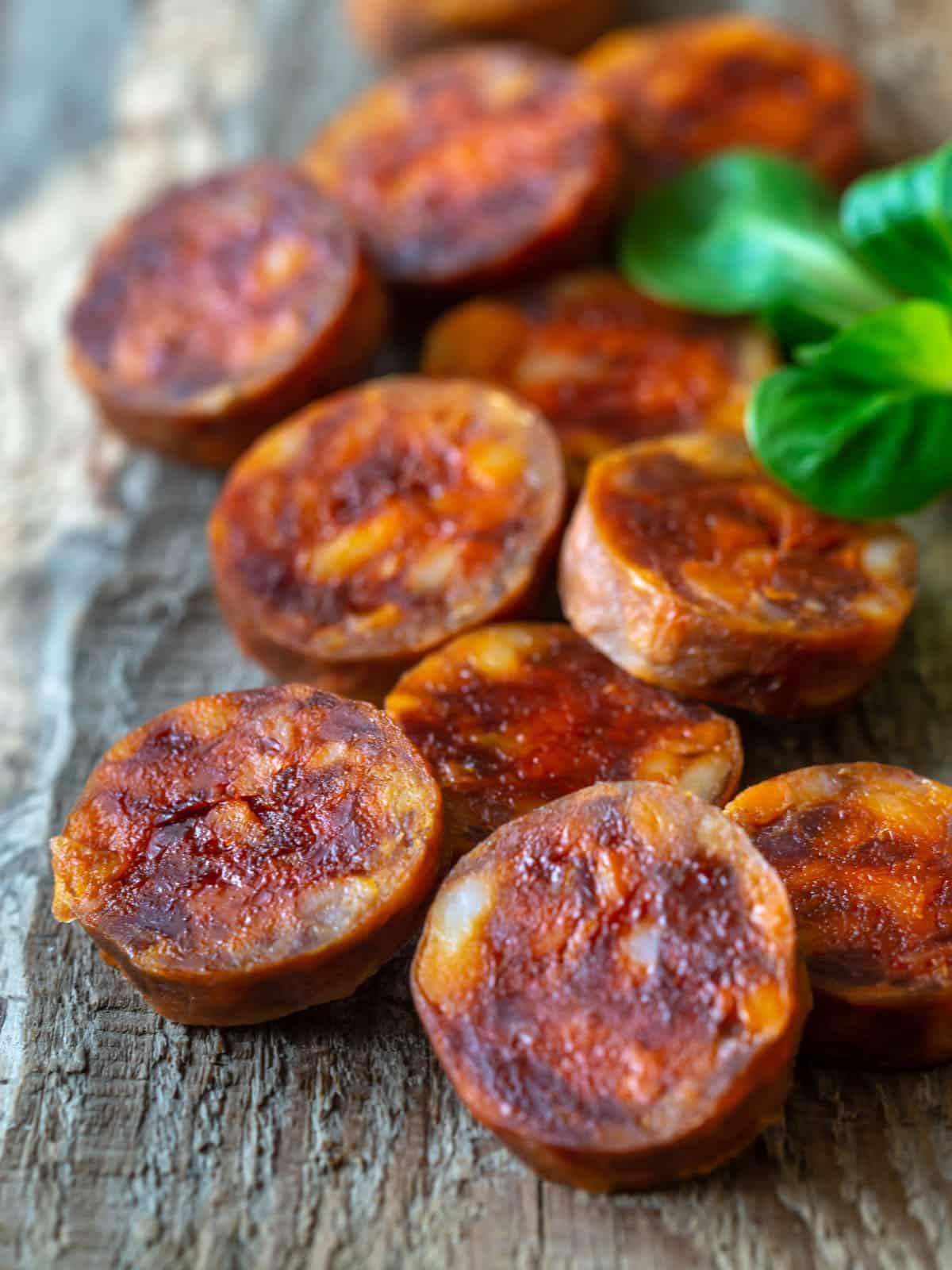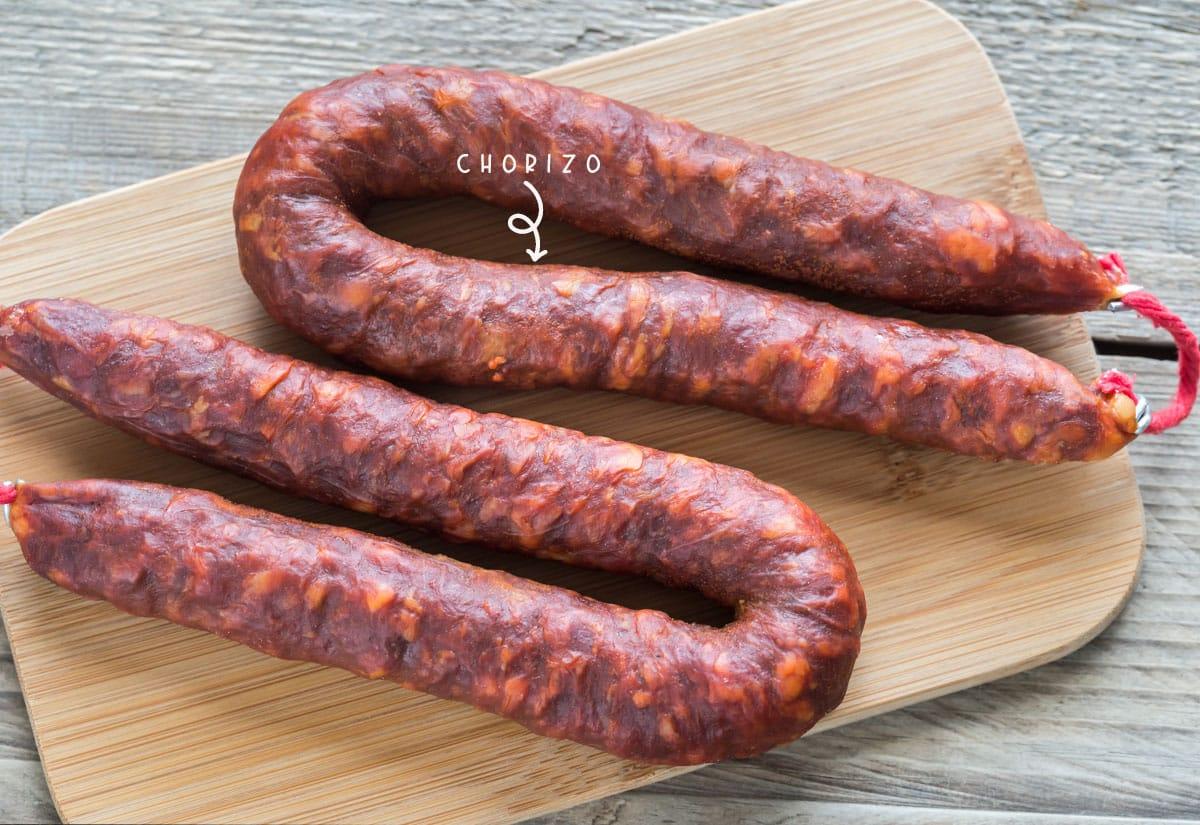Chorizo is a beloved type of pork sausage that hails from Spain and Mexico. With its rich, smoky flavor and just the right amount of spice, chorizo adds a unique taste to any dish. But how can you tell when chorizo is done cooking? Is there a way to know without cutting into it? We’ve got you covered with six tried-and-true methods to determine if your chorizo is cooked to perfection.
What’s the Best Way to Cook Chorizo?
Before we dive into how to tell when chorizo is done, let’s explore the best ways to cook this delicious sausage. Whether you prefer frying, grilling, roasting, simmering, or stewing, chorizo can be prepared in a variety of mouthwatering ways. Keep in mind that chorizo is highly seasoned, so a little goes a long way in adding flavor to your dishes. Cooking chorizo allows the flavors to develop and meld, making it even more enjoyable.
Method 1: Cook Chorizo in a Frying Pan
One of my favorite methods to cook chorizo is in a frying pan. This technique renders the fat, sears the outside, and keeps the inside juicy. Here’s how to do it:
- Preheat the pan: Place a large skillet over medium-high heat. Add a bit of oil to the pan if your chorizo is lean.
- Add the chorizo to the pan: Once the pan is hot, add the chorizo and adjust the heat to medium-low. If you’re using links, cook them whole. I personally prefer cooking chorizo in whole pieces and then slicing them after they’ve cooked.
- Pour some water: If the chorizo is dry and starting to stick, add some water to the pan. The water will help render the chorizo fat and keep it moist.
- Cook the chorizo: Cover and simmer the chorizo for about 10 minutes or until it’s cooked. Flip or turn the links a few times during cooking to ensure even cooking. Use a knife to check if the chorizo is ready; it should be slightly pink in the center. If you’re using loose chorizo, brown it until golden.
- Remove the chorizo from the pan: Once cooked, remove the chorizo from the pan and drain it on a paper towel. If necessary, cut the links into slices and serve.
Method 2: Cook Chorizo in the Oven
If you’re cooking a large batch of chorizo or prefer a hands-free cooking approach, baking it in the oven is a great option. Follow these steps for perfectly cooked chorizo:
- Preheat the oven: Set your oven to 350°F (175°C). Preheating gradually heats up the chorizo, ensuring even cooking.
- Place the chorizo on a baking sheet: Line a baking sheet with foil or parchment paper. Place the chorizo on the baking sheet and prick it a few times with a fork. This allows the fat to render out while cooking, preventing the chorizo from bursting in the oven.
- Bake the chorizo: Transfer the baking sheet to the oven and bake the chorizo for 12 to 15 minutes, or until it’s cooked. The exact cooking time will depend on the size and type of chorizo you’re using.
- Remove the chorizo from the oven: Once cooked, let the chorizo cool before slicing or serving.
How to Tell When Chorizo is Done: 6 Methods
Now that you know how to cook chorizo, let’s explore how to tell when it’s perfectly done. Here are six reliable ways to determine if your chorizo is cooked to perfection:
-
Check the color: When chorizo is raw, it has a vibrant red color. As it cooks, it will gradually turn brownish. The color change occurs due to the Maillard reaction, which creates brown pigments. When the chorizo reaches a brown or orange hue, it’s a sign that it’s almost done and ready to eat.

-
Assess the texture: Raw chorizo is typically crumbly, but as it cooks, it should become slightly firm while retaining a juicy texture. If the chorizo is still crumbly, it’s a sign that it’s undercooked and contains traces of raw meat. On the other hand, if it’s too firm, it’s overcooked and may end up dry. The ideal texture for cooked chorizo is somewhere between these two extremes.
-
Follow your nose: Cooked chorizo emits a distinct smell that differs from its raw state. After cooking, the smell becomes more subtle and pleasant, with a slightly spicy aroma. If your chorizo smells burnt or overly greasy, you’ve cooked it for too long. Keep in mind that the aroma of properly cooked chorizo should be inviting and appetizing.
-
Cut it open: Slicing into the chorizo allows you to check the color of the meat. It should no longer be pink or red in the center and should be thoroughly cooked. Certain types of chorizo contain uncooked ingredients, so it’s essential to ensure that it’s cooked properly to avoid any risk of food poisoning.
-
Timing is key: When frying chorizos, cook them until the oil oozes out and turns a deep red color. This process typically takes between four and six minutes. To confirm if they’re done, take one out of the pan and cut it in half. If the meat is thoroughly cooked, it’s ready to be enjoyed. If not, return it to the pan for a few more minutes.
-
Use a meat thermometer: For precision, use a meat thermometer to measure the internal temperature of the chorizo. Insert the thermometer into the thickest part of the sausage. A temperature of 160 degrees Fahrenheit (71 degrees Celsius) indicates that it’s well-cooked and safe to eat.
Types of Chorizo Sausage
Chorizo sausage comes in two main varieties, each offering its distinct flavor and texture. Understanding the type of chorizo you have will determine its cooking requirements:
-
Spanish chorizo: This type of chorizo is dryer and firmer, with a strong, smoky flavor. It can be semi-cured or fully cured, and it’s best simmered. The curing process provides enough preservation, making it safe to consume without cooking. However, it’s recommended to cook semi-cured chorizo for better flavor development.

- Fully cured chorizo: Fully cured chorizo has a harder and drier texture, often with a more orange or red color due to the presence of paprika. Its strong aroma and firmness indicate that it’s ready to eat without further cooking.
- Semi-cured chorizo: This variety falls between regular sausage and fully cured chorizo in terms of texture. It has a softer texture with a paler color, as it contains more moisture and has less paprika. Semi-cured chorizo offers an intense chorizo flavor, albeit milder than fully cured chorizo. When in doubt, it’s best to cook semi-cured chorizo before consumption.
-
Mexican chorizo: Made with fresh pork, chili peppers, and vinegar, Mexican chorizo is softer and has a crumbly texture. It requires cooking and is commonly used in Mexican cuisine, adding flavor to dishes such as huevos rancheros, quesadillas, tacos, and burritos. Ensure that Mexican chorizo is cooked thoroughly before enjoying it.
FAQs
To address common questions about chorizo, we’ve compiled a list of frequently asked questions:
-
Should you boil chorizo before cooking? Boiling chorizo is unnecessary but can help release some fat from the sausage. This can make it slightly healthier and prevent the chorizo from sticking to the pan. If you choose to boil chorizo, place it in a pot of water for 5-10 minutes before cooking.
-
Can you eat chorizo raw? While technically possible, it is not recommended to eat raw chorizo, especially if it’s not fully cured. Fresh chorizo can be greasy and may cause indigestion. Therefore, cooking chorizo before consuming it is the best approach.
-
Should you remove the casing before cooking? The casing of chorizo is edible and adds a delightful flavor to the dish. Pricking it with a fork prevents it from bursting while cooking. Cooking the chorizo over medium-low heat ensures that the casing doesn’t become too crispy. However, if you prefer, you can remove the casing, keeping in mind that the filling may fall out.
-
Does chorizo contain gluten? While many brands of chorizo are gluten-free, it’s crucial to check the labels to confirm. Some manufacturers produce other meat products containing gluten, posing a risk of contamination. Traditional chorizo recipes may include wheat flour as a binding agent. However, there are plenty of gluten-free recipes available, and you can always substitute gluten-free flour or omit it altogether.
Wrap-Up
Whether you’re a chorizo enthusiast or new to this delicious sausage, knowing how to tell when it’s cooked is crucial for a safe and enjoyable culinary experience. By observing the color, texture, and aroma, and using techniques such as cutting it open or employing a meat thermometer, you can ensure that your chorizo is done to perfection. Remember to enjoy it in moderation, as chorizo is highly flavorful, and a little goes a long way in elevating your dishes.



